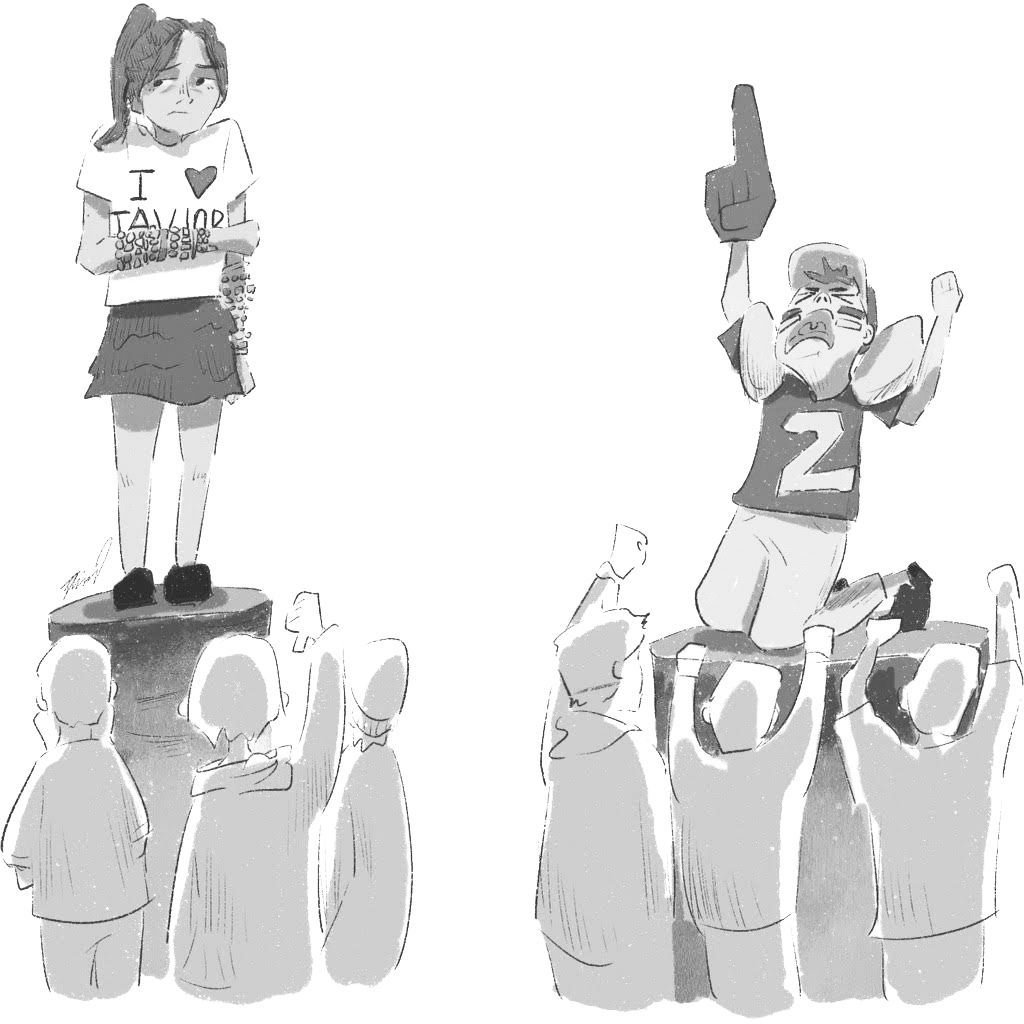My first Club Rush experience was very different from my most recent one.
It was, at first, a grand showcase of club diversity, and for me, it set the bar high for the rest of the year.
I gave up my freshman year lunches for any club meeting that piqued my interest, but as the weeks went by, clubs started losing members and meetings became infrequent. When the excitement of Club Rush faded away, for many clubs, their future prospects faded away with it.
So, when I look at Club Rush now, I tend to be a little pessimistic. I see clubs that, for the first time that school year, have come out of hibernation.
But their presence at Club Rush doesn’t always translate into a presence on campus. What is most frustrating about this to me is that those in charge of clubs seemed to tolerate this, sometimes even letting this inactiveness go undetected.
This phenomenon brings up questions about these clubs and how we got to this point. How did we let these clubs go inactive, despite their great potential?
Initially, I solely blamed the club approval process. I questioned ASB’s thoroughness (or lack thereof) when it came to selecting which new clubs would be approved. To elaborate, the current approval process includes a club application form, a proposal meeting with the ASB class during which the club is explained, and a group discussion by ASB, followed by a vote. This discussion often includes some candid opinions on what a club would need in order to thrive at Westview. After approximately 30 minutes of debate, ASB must vote with two-thirds majority for the club to pass.
ASB adviser Shannon Parker said the evaluation ultimately boils down to whether or not the proposed club would enhance Westview’s culture. However, due to the lack of a set criteria for the evaluations, the discussion over how a club improves Westview culture can easily end up being centered around what each individual member of ASB values. While one member may seek longevity from a new club, another member may prefer a club to be original, and still another may want a club to expand its influence beyond the confines of Westview.
Now, this holistic review of clubs is not fundamentally flawed. In fact, the current process allows ASB to evaluate the club as a whole instead of focusing on strict individual aspects. This process does, however, breed ambiguity, leaving certain proposed clubs to feel as if ASB’s reasons for rejection were ungrounded and vague.
But ultimately, the flaws within Westview’s club system don’t start or end with the approval process. The issues reflect a larger flaw in club oversight, stemming from a lack of club maintenance after the approval process.
When clubs are approved, ASB makes the effort to send them off with a set of rules, a meeting minutes quota, and an encouraging pat on the back. But any efforts to check up on how clubs are doing after the initial approval range from half-hearted to simply nonexistent.
The only system in place to combat this type of negligence is one that rarely sees the light of day: club audits.
These audits are supposed to occur twice each school year to evaluate clubs’ progress. But, the physical audits are only conducted if the club has a terrible track record with paperwork. If the club steers clear of any serious complaints and the adviser signs off on meeting minutes, the club won’t face any real progress check-ups.
Without these follow-ups, clubs lack any pressure to go beyond the bare minimum of paperwork, letting some clubs’ potential fall flat over the years. Looking at Westview’s club culture, it’s fair to say that there is no shortage of inactive clubs that have failed to fulfill the purpose they were founded on.
What’s missing, then, is a proactive committee that doesn’t just deal with the bi-annual Club Rushes and paperwork, but one that can make sure clubs are effectively run. Otherwise, if they have no accurate way of evaluating club culture on campus how can ASB members make educated decisions about which clubs to approve? Whether it be stricter, more thorough audits or an approval system that demands more than just a class discussion, there needs to be some form of improvement.
However, it’s unfair to place this responsibility solely on the club commissioners. It is easy to assume that those titled “ASB Club Commissioner” are culpable for the lack of oversight on clubs on campus. But they were assigned the task of filing meeting minutes and sign-up sheets, not of looking after how each club is functioning. The problem is much larger and much older than the three current club commissioners.
With more than 100 clubs at Westview, and with a vast majority of the student body involved in multiple student organizations, we need more oversight from those who “move culture forward on Westview’s campus,” as they put it.





